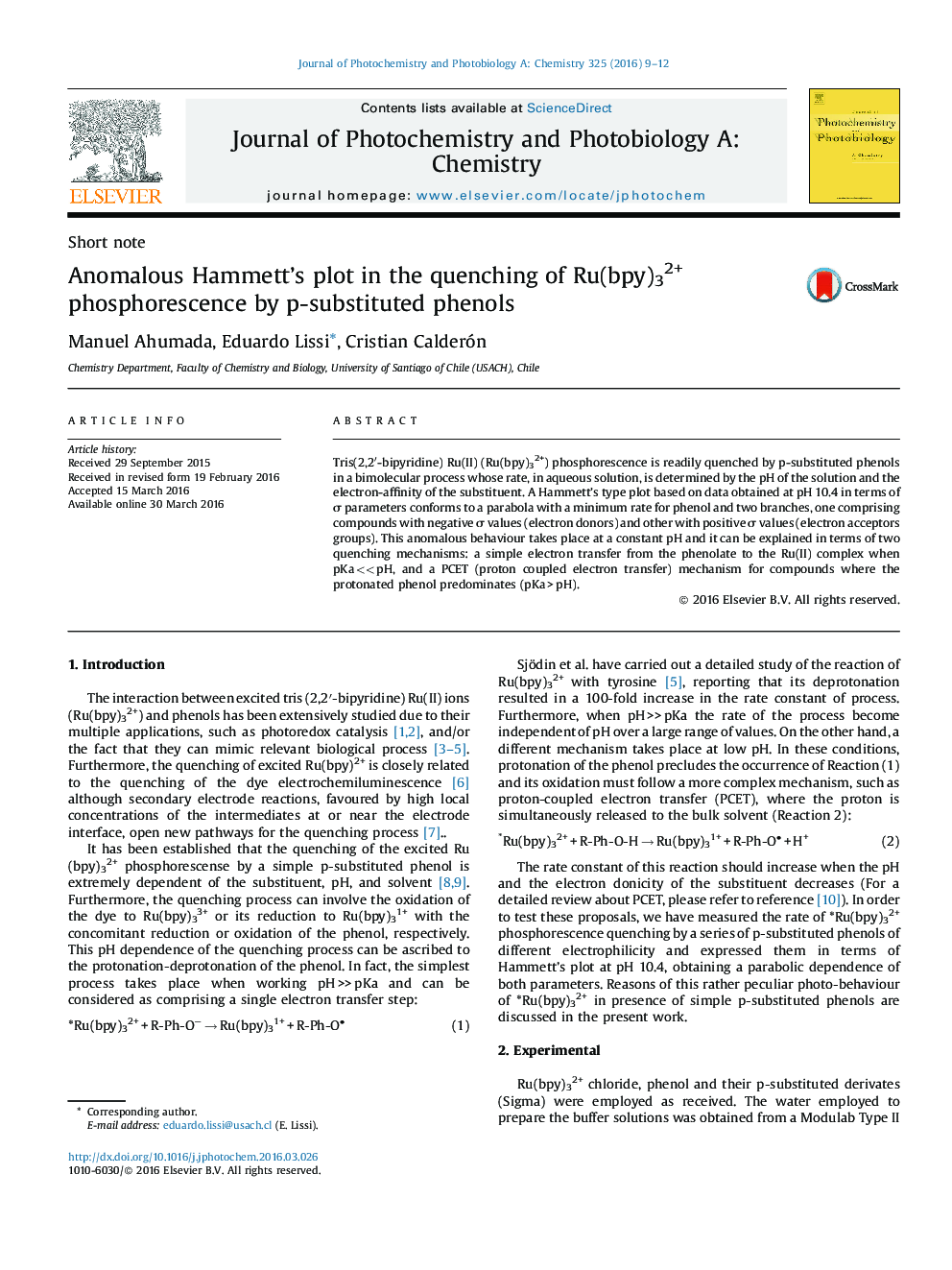| کد مقاله | کد نشریه | سال انتشار | مقاله انگلیسی | نسخه تمام متن |
|---|---|---|---|---|
| 26089 | 43933 | 2016 | 4 صفحه PDF | دانلود رایگان |
• Tris (2,2′-bipyridine) Ru (II) phosphorescence is readily quenched by 4-substituted-phenols at basic pH.
• A Hammett’s plot shows a parabolic behaviour with a minimum rate for phenol, one branch with negative σ and other with positive σ values.
• The parabolic behaviour can be explained in terms of two different quenching mechanisms.
Tris(2,2′-bipyridine) Ru(II) (Ru(bpy)32+) phosphorescence is readily quenched by p-substituted phenols in a bimolecular process whose rate, in aqueous solution, is determined by the pH of the solution and the electron-affinity of the substituent. A Hammett’s type plot based on data obtained at pH 10.4 in terms of σ parameters conforms to a parabola with a minimum rate for phenol and two branches, one comprising compounds with negative σ values (electron donors) and other with positive σ values (electron acceptors groups). This anomalous behaviour takes place at a constant pH and it can be explained in terms of two quenching mechanisms: a simple electron transfer from the phenolate to the Ru(II) complex when pKa << pH, and a PCET (proton coupled electron transfer) mechanism for compounds where the protonated phenol predominates (pKa > pH).
Journal: Journal of Photochemistry and Photobiology A: Chemistry - Volume 325, 1 July 2016, Pages 9–12
